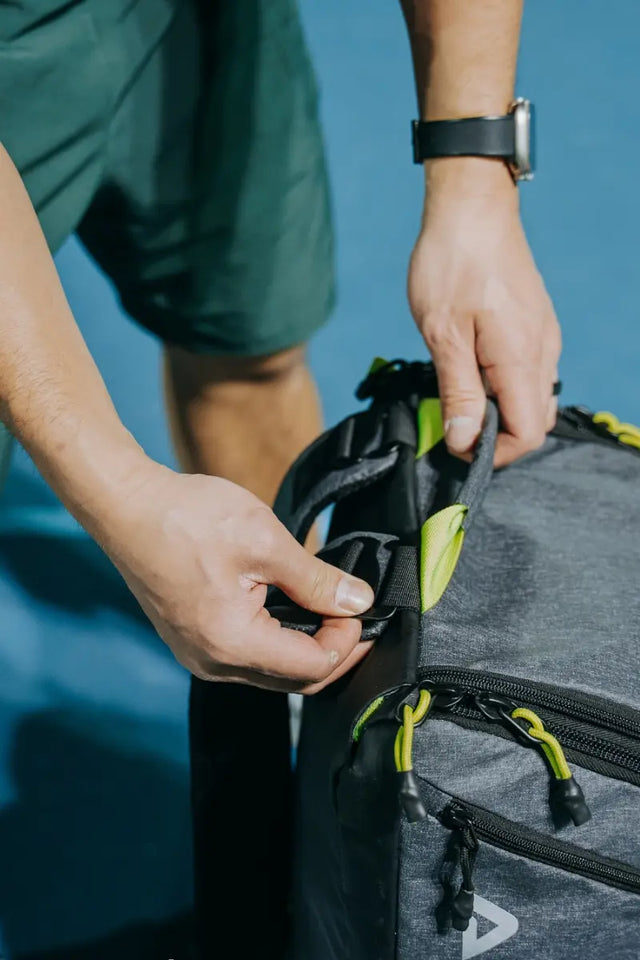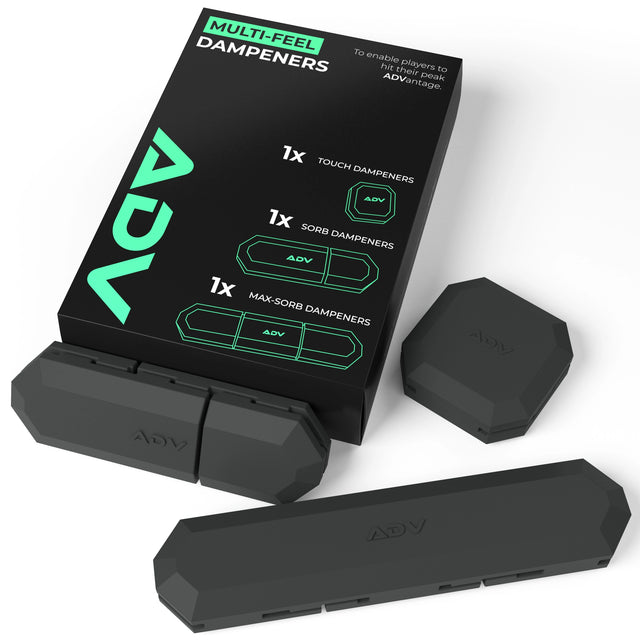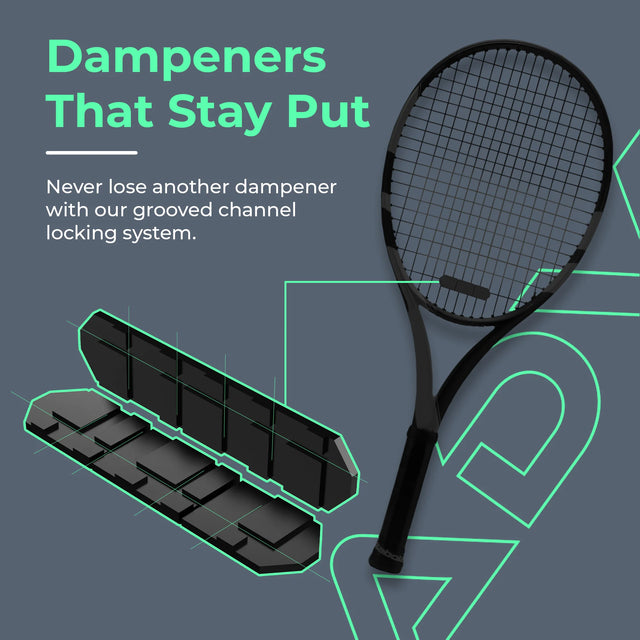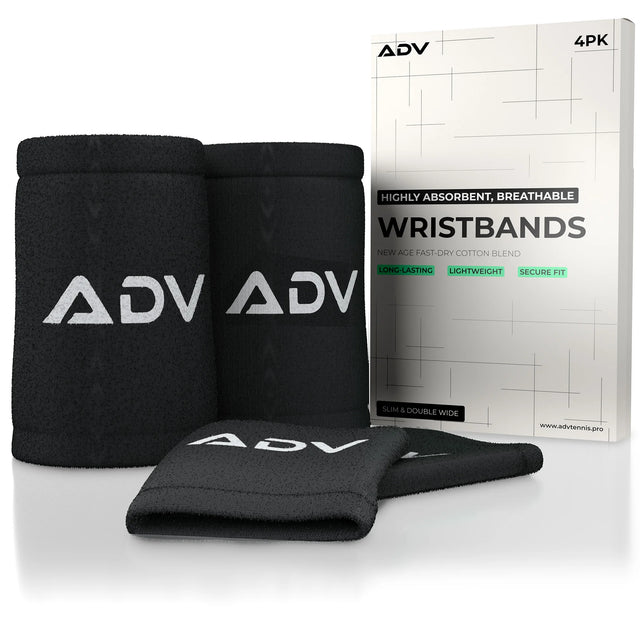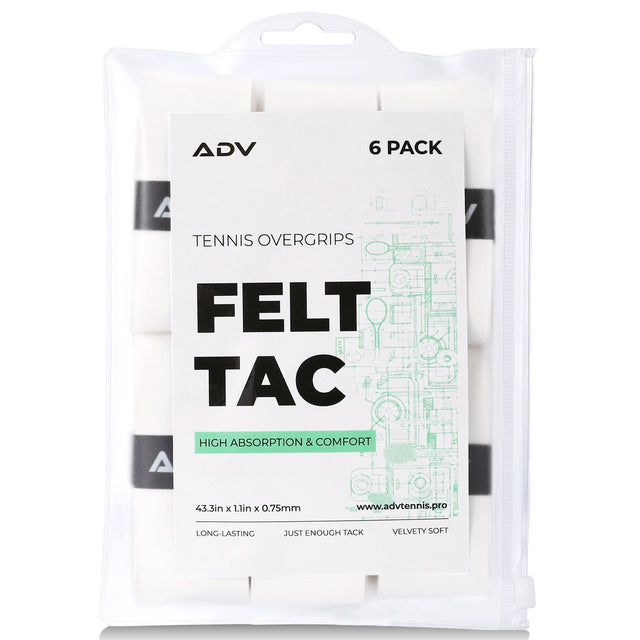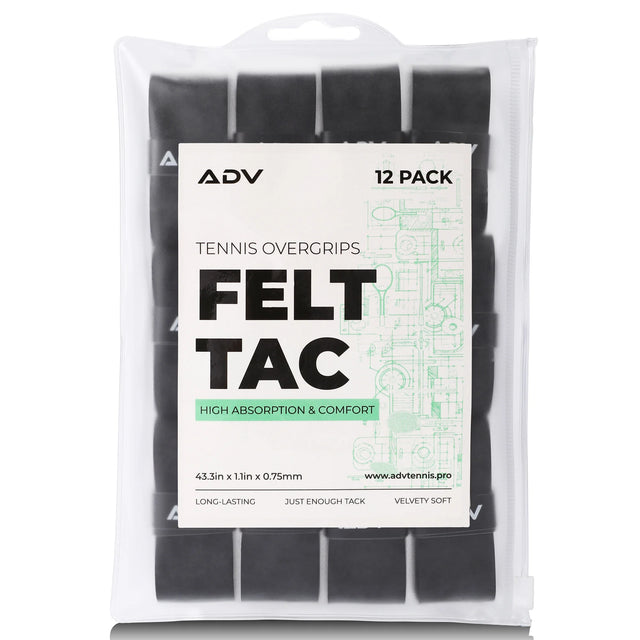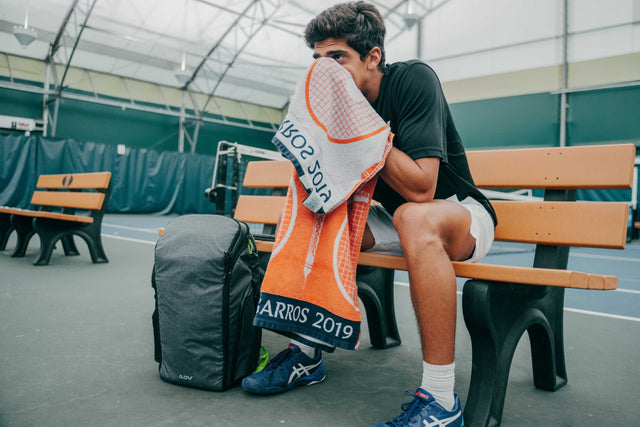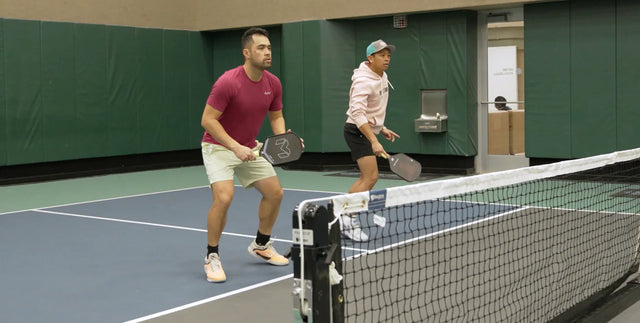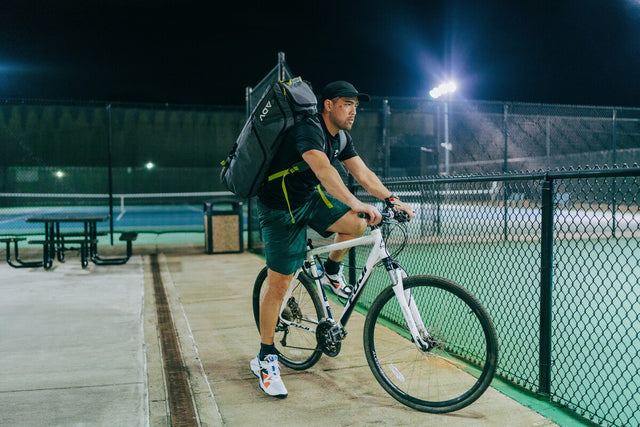Court-Ready Packing: Advanced Organization Tips for Your Tennis Bag
Every tennis match begins long before the first serve. It starts with preparation. Learning how to pack a tennis bag efficiently can give you a competitive edge. An organized tennis bag ensures that all your gear is in place and easily accessible when you need it, reducing pre-game anxiety. For players aiming to perform at their best, an organized bag is essential. It acts as a mental checklist that confirms all your best tennis gear is packed and ready, which in turn boosts confidence and focus on the court. In this guide, we’ll share organized tennis bag tips and advanced strategies to keep your equipment ready for the court.
Choosing the Right Tennis Bag for Organization
The foundation of an organized kit is the bag itself. With so many tennis bag brands and models on the market, picking the right one can make organizing a lot easier. Look for features that support efficient packing, such as multiple compartments, accessory pockets, and durable materials. Bags specifically designed for tennis often have dedicated sections, such as insulated racquet compartments to protect the strings, ventilated pockets for shoes or damp clothes, and fleece-lined pouches for valuables. The top tennis bags even include extras like cooler pockets for drinks or climate protection technology to shield gear from extreme temperatures. All these features prevent your equipment from jumbling together and help you find items without digging around. Must-have tennis bags for serious players are those that strike a balance between capacity and smart compartmentalization, ensuring comfort while allowing you to carry everything you need without strain or disorganization.
Consider your level of play and how much gear you carry. A club player might get by with a 3-pack or backpack-style tennis bag, while a tournament competitor might opt for a 9-pack or larger tennis travel bag. Backpacks and tote bags are portable and great for those on the move, but they hold less; large duffel-style racquet bags or wheeled travel bags offer more space for multiple racquets, outfits, and accessories. If you frequently travel for matches, a high-capacity tennis travel bag with wheels or a duffel that doubles as luggage can be a game-changer – some elite bags even transform into rolling suitcases for easy transport through airports. Always choose a bag that fits your current needs with a bit of room to spare. You don’t want it overstuffed, but also not so large that the gear shifts around. The more thoughtfully the bag is designed with compartments and support, the easier it will be to keep things tidy.

An often overlooked aspect of staying organized is the build quality of the bag. Sturdy zippers, water-resistant fabrics, and reinforced seams mean your bag can handle the weight of equipment and the rigors of travel without bursting at the seams at an inopportune moment. High-quality materials also protect your gear from the elements. A bag that’s easy on your shoulders lets you pack what you need without hesitation. Lightweight designs can help, but not at the expense of durability. Tennis bag deals are worth exploring, but make sure you prioritize the fundamentals over fancy extras.
Essential Tennis Bag Items: Your Gear Checklist
To make your bag truly court-ready, it should contain all the essential tennis bag items you might need in a practice or match. Think of this as a tennis gear checklist covering equipment, accessories, and personal items. Below are the must-haves:
- Rackets: Always pack your primary racquet plus at least one backup. Strings can break unexpectedly, and having a spare (or multiple if you’re a competitive player) ensures you’re not stranded mid-match. Keep racquets in their dedicated compartment or sleeve to prevent scratches and tension loss. Many bags have padded racquet sections for this reason.
- Tennis Balls: Bring a fresh can of balls for matches (fresh balls have optimal bounce) and maybe an extra if you’ll practice serves or drills. You might also carry used balls for casual hits or warm-ups. Store them in a pocket or side compartment where they won’t get crushed. Some players keep a separate ball tube or sack inside the bag to store tennis balls neatly.
- Shoes: A good pair of tennis shoes is crucial for performance and safety. Pack a pair appropriate for the surface, and if you have space, an extra pair, especially if conditions could be wet or if you’re playing multiple matches. Use the bag’s shoe tunnel or a waterproof shoe bag if possible, to keep dirty soles away from your clothes.
- Apparel: Always have at least one change of clothes. This includes an extra shirt (or two), socks, and maybe a change of shorts/skirt. Tennis is a sweaty sport, and changing into dry clothes between matches or afterward helps keep you comfortable and presentable. If you expect varying weather, pack layers, such as a light jacket or sleeves for sun protection, and a dry-fit hat or visor.
- Tennis towel: A towel is indispensable for managing sweat. A small towel can be kept on hand during changeovers to wipe your face and hands, and a larger towel or two can be used to dry off after a match or to lie on a bench. Pack your towel in a breathable section or plastic bag if it’s damp after use, so it doesn’t soak other items. Many consider a towel so critical that forgetting it can throw off their game routine.
- Hydration and Snacks: Staying hydrated and fueled is part of your equipment, too. Always pack a water bottle and perhaps a sports drink. Use an insulated pocket or side pouch to keep drinks cool. Likewise, toss in some energy-boosting snacks: bananas, energy bars, or trail mix work great. These keep your energy up during long matches or practices. Remember to put liquids in leak-proof containers and maybe a ziplock, just in case.
- Grip Accessories: Overgrips or tennis grip tape are small but mighty items. Sweaty palms or worn grips can quickly lead to slips and mishits. Carry a couple of spare overgrips so you can change one out if your racquet grip becomes too slick or starts to peel. It takes only a minute to swap an overgrip before a match, and it can save your game. Likewise, pack a few vibration tennis dampeners if you use them – these tiny rubber pieces can be easily lost, so having spares ensures your racquet feels just right. Keep all these little accessories in a small zippered pouch so they don’t get lost in your bag’s abyss.
- Protective Gear: Bring any braces or supports you use, like knee braces, ankle wraps, or elbow bands. Even if you don’t always need them, it’s wise to have them on hand in case of a flare-up or if a minor injury starts acting up. Also include sweatbands or wristbands; they help keep sweat off your hands and also double as sun protection for your arms.
- First Aid and Care: A small first-aid kit in your bag can be a lifesaver. At minimum, include band-aids, athletic tape, and pain relievers. Blister pads or a Moleskine are invaluable if you feel a blister coming on. If you’re prone to cramping, pack some electrolyte tablets or even a salt packet. These items take up little space but can save your match if an injury or ailment pops up. As one avid player notes, having things like band-aids and blister plasters handy can take away pain and keep you on the court when minor injuries strike. Better to be over-prepared than forced to retire because of something manageable.
- Personal Items: Don’t forget personal necessities that can impact your comfort and performance. High-SPF sunscreen is critical for outdoor matches – apply before play and reapply as needed. A lip balm with SPF will protect your lips from the sun and wind. If you’re playing under a hot sun, pack a hat or visor. Also, consider sunglasses for bright conditions, and an extra hair tie or headband if you have longer hair.
This might seem like a lot, but a well-designed bag can fit all these essential tennis bag items in an organized way. By packing thoughtfully, you can turn your bag into a one-stop solution for any need that arises on court.

Advanced Organization Tips and Ways to Pack Tennis Accessories
Advanced organization is all about efficiency and protection, making sure each item has its place and can be retrieved at a moment’s notice. Here are some pro-level packing strategies:
- Leverage Compartments and Pockets: Make full use of every compartment your bag offers. Assign each a specific purpose. For example, use the most significant section for racquets and maybe a rolled-up outfit, but use smaller side pockets for accessories like grips, wristbands, and sunscreen. Many bags have thermal-lined sections for racquets – use them for racquets only. Shoe compartments? Keep your shoes there, along with perhaps a deodorizer ball to keep odors at bay. Mesh pockets are great for letting items breathe – perfect for that damp tennis towel or sweaty clothes after play. By compartmentalizing like this, you won’t have heavy or hard objects clanging into your racquets, and you won’t have to rummage through a mix of items to find a tiny dampener. Every item type has a “home” in your bag. Effective compartmentalization simplifies packing, and customizable tennis bag compartments let you separate gear so you spend less time searching and more time playing.
- Small Gear, Small Containers: Tiny accessories have a way of vanishing into the depths of a tennis bag. Solve this by grouping and containerizing them. Use resealable plastic bags or pouches to hold related small items together – for instance, keep all your overgrips and grip tape in one little ziplock, and your dampeners, lead tape, and spare screws in another. A clear toiletries bag or pencil case can work well too, as it’s more durable than a flimsy plastic bag and you can see what’s inside. One creative hack from seasoned players is repurposing empty tennis ball cans as organizers: you can stash things like sunscreen or bug spray in one can, wristbands in another, and dampeners or tape in a third. The cylindrical cans fit easily in a side pocket and prevent those items from rattling around loose. By using mini containers, all those tennis accessories that tend to get lost will stay put and be easy to find when you need them.
- Arrange by Frequency of Use: A smart packing strategy is to place items in your bag based on how often and how urgently you’ll need them. Think of it like layering for accessibility. Items you might grab mid-match or on short notice should be in the most accessible pockets. Keep a couple of extra balls, your water bottle, and an energy bar in an outer pocket or top compartment so you can grab them on changeovers quickly. Your primary racquet should be in the main racquet compartment, but consider keeping the compartment unzipped or only lightly zipped during play so you can swap racquets in seconds if needed. By contrast, things like your backup shoes or rain jacket can sit at the bottom of a large compartment since you’ll only need them between matches or in specific situations. An advanced tip is to actually pack your bag in the order of use. If you know you have a warm-up, then a match, then perhaps a post-match cooldown, you can pack your warm-up gear on top, match gear in the middle, and post-match items (like fresh clothes and slides) beneath. This sequencing means you don’t disturb the entire bag’s contents each time you reach for the next thing.
- Use Labels or Color-Coding: If you really want to go the extra mile with organization, consider labeling sections of your bag or using color-coded pouches. For instance, use a red bag for medical/first aid supplies, a blue pouch for toiletries, green for snacks, etc. This is especially helpful if your bag has identical-looking pockets – you won’t have to open each to remember what’s inside. Some players use keychain tags on zippers. It might seem excessive, but during the heat of competition or travel, these visual cues can save precious seconds and mental energy.
- Protect and Secure Fragile Items: Organization isn’t only about finding things easily – it’s also about protecting your gear. If you carry a smartphone, tablet, or other electronics in your tennis bag, use a padded sleeve or the designated valuables pocket. Put your phone on silent and tuck it safely away before you play, so it’s not bouncing around or liable to slip out when you open the bag. For sunglasses, keep a hard case in your bag so they don’t get crushed. Any liquids should ideally be in sealed bags to prevent leaks onto your clothes or equipment.
- Maintain Balance: Have you ever picked up your bag and found it lopsided? Uneven weight distribution can be annoying and even lead to spills. Pack heavier items at the bottom and towards the center of the bag. A full can of tennis balls and your shoe case might be among the heavier things, and placing them at the bottom helps stabilize the bag’s base. Distribute weight between the left and right sides if you have side compartments. If you stand your bag up, heavy stuff at the bottom prevents it from easily tipping.
By implementing these advanced packing methods, your tennis bag will function like a well-oiled machine. Everything will have its place, and you’ll be able to transition from drills to matches to post-game routines seamlessly.
Common Mistakes and Best Practices
Even the most seasoned tennis players can fall into habits that undermine their bag organization and, ultimately, their on-court readiness. Recognizing and correcting these frequent errors can save you time, extend the life of your equipment, and help you maintain focus during play. One of the most common mistakes is overpacking the tennis bag with unnecessary items. Players often think that bringing extra gear “just in case” is helpful, but this leads to clutter, makes it harder to find essentials, and puts undue strain on the bag’s structure and zippers. The best practice is to audit your bag regularly—remove anything you haven’t used in recent matches, and stick to a curated checklist of true essentials. This keeps your bag lighter, better balanced, and easier to manage.
Another frequent error is failing to use the bag’s compartments as intended. Tossing everything into the main compartment causes items to shift, tangle, or even become damaged. Rackets without adequate padding can get scratched or lose tension if they bump against complex objects. Shoes stashed with clean clothes can transfer dirt and odor. The best practice is to assign each compartment a specific purpose: racquets in their padded slots, shoes in their ventilated section, accessories in zippered pockets, and valuables in fleece-lined pouches. Improper weight distribution is another overlooked issue. Packing heavy items like shoes or ball cans at the top or sides of the bag can make it unstable and uncomfortable to carry. Always place heavier items at the bottom and center of the bag to maintain balance and prevent the bag from tipping. Adjust shoulder straps or handles so the bag sits comfortably and evenly on your body, reducing fatigue and risk of injury. Many players forget to update their packing habits as their needs change. Your gear requirements may shift with the season, your level of play, or changes in your routine. Make it a habit to review your packing list and bag setup every few months to ensure your system still works for you.
Travel and Tournament Bag Essentials
An oversized racquet bag can often serve as a carry-on and gear bag in one. Here are some travel-specific tips and travel tennis bag essentials to ensure your gear arrives safely and you stay organized on the road:
- Choose the Right Bag for Travel: If you frequently fly with your tennis gear, invest in a bag that’s designed for travel. Many tennis brands offer premium travel bags or tour bags with reinforced sides and ample space. A high-capacity wheeled tennis bag can be a lifesaver in airports – look for one that fits within airline size limits for checked baggage. Always check your airline’s policies: tennis racquets are generally allowed in carry-on luggage, but size limits apply. Some players prefer to carry their racquets on board to avoid potential string damage in unpressurized cargo holds, while others pack them in checked luggage padded with clothes. If you do check your gear bag, consider a hard-shell case or at least add extra cushioning around your racquets to protect against rough handling.
- Pack Smart for Air Travel: When flying, certain items need special attention. Keep any liquids in travel-size bottles under the TSA limit, and store them in a clear ziplock in an outer pocket for easy removal at security. New canisters of tennis balls sometimes cause curiosity at airport security; you can pack opened balls or be ready to explain what they are. It’s wise to have your tennis bag as your carry-on if possible, so you don’t risk losing luggage that contains your gear. If space is tight, prioritize carrying on your racquets and one outfit/shoes in case checked luggage is delayed.
- Tournament Logistics: If you’re heading to a tournament, you might also need some non-playing items that still belong in your bag. Some players bring a jump rope or resistance band to warm up, as these are lightweight and can tuck into a corner of your bag. Massage balls or a foam roller aid in recovery between matches. Don’t forget a notepad or your phone to jot down match notes or record scores – keep it in that valuables pocket. If you have them, bring spare strings or a string reel and your stringing tools – at tournament sites, there are often stringing services, but having your string ensures consistency. Pack them in a side pocket so they don’t get kinked.
The more you travel, the more refined your packing routine will become. Many touring pros and serious juniors swear by having duplicate items and a consistent packing method, so nothing is forgotten when hopping between cities.

Maintaining Your Tennis Bag: Cleanliness and Odor Control
A frequently overlooked aspect of bag management is regular maintenance. Sweat, clay, grass, and general wear and tear will take their toll on your gear and bag if you don’t address them. After a long match or intense practice, resist the temptation to zip everything up and toss the bag in a corner. Take a few minutes to air out damp items. One of the best defenses against odors is letting gear dry properly before zipping it away. This is especially true for shoes – sweaty shoes stored wet will breed bacteria and stink. Leave your shoes out of the bag for at least 30 minutes post-session to let moisture evaporate. Similarly, hang your damp clothes or towels up to dry at home, or at least drape them over the bag until you get to the laundry. Even leaving the bag itself open in a well-ventilated area for a while helps moisture escape. Many modern tennis bags have vented pockets; still, nothing beats giving items exposure to fresh air.
Despite our best efforts, odors can develop. Baking soda packets or silica gel packs can also help by absorbing moisture and neutralizing odors. Some players even use dryer sheets for a pleasant scent – remember to change them regularly. A quick spray of a sports gear disinfectant or anti-odor spray after use can also keep bacteria at bay. These little tricks will keep your bag from smelling like a locker room. Occasionally, give your bag a thorough cleaning. Empty everything out – yes, everything. You might be surprised at the accumulated ball fuzz, grit, and wrapper trash hiding in corners. Most tennis bags can be gently cleaned with a damp cloth, mild soap, and water. Wipe down the inside of compartments to remove any dirt or residue. If the base is dirty from the court, clean that too. Some bags can even be put in a bathtub for a gentle wash, but always check the manufacturer's instructions. Never use harsh chemicals or bleach, as they can damage the material or leave a pungent smell.
Small maintenance steps can prolong your bag’s life. For instance, avoid dragging your bag on the ground; instead, use the grab handles or wheels if they are available. If you notice a tear or a split seam, fix it sooner rather than later – a bit of strong fabric glue or a stitched patch can stop it from widening. Inspect zippers regularly; if they get gritty, a quick rub of candle wax or zipper lubricant can keep them running smoothly.
These organized tennis bag tips aren’t a one-time effort but a routine. Make a habit of packing your bag the smart way every time and maintaining it regularly. Over time, packing like a pro will become second nature. Whether you’re a weekend warrior or training for the next big tournament, a well-organized tennis bag means fewer worries and more headspace to strategize and enjoy the game. Before heading out for your next match, take a moment to review your tennis gear checklist, highlight your must-haves, and utilize the advanced tips from this guide. You’ll step onto the court feeling prepared, composed, and truly court-ready.
Sources
-
fingerlakes1.com FingerLakes1 Digital Team, “Match Prep: Expert Tips for Packing the Ultimate Tennis Bag for Success” – Affordable Tennis Bags section.
-
tt.tennis-warehouse.com Talk Tennis Warehouse Forum, “How do you organize your tennis bag?” – user tip by 1HBHfanatic (Aug 27, 2019).
-
fingerlakes1.com FingerLakes1 Digital Team, “Match Prep: Expert Tips for Packing the Ultimate Tennis Bag for Success” – Strategic Packing Plan section.
-
thecoastlandtimes.com The Coastland Times (sponsored content), “How to Organize Your Tennis Bag Like a Pro” – Shoe Odor Ventilation tips (April 10, 2025).
-
advtennis.pro ADV Tennis Blog, “Packing Your Tennis Bag: Tips for Staying Organized” – Conclusion on organized bag and performance.

